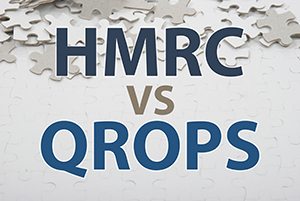HMRC has a history of making sweeping amendments to legislation based on trial and error. As such it should come as no surprise to learn that since the introduction of QROPS in 2006, there have been over 20 new regulations imposed on the scheme, five amendments, and an awful lot of exclusions and legislation placed on certain jurisdictions.
In April/May 2012, the regulatory changes led to one of the prime QROPS destinations being excluded altogether from the scheme. Singapore had numerous QROPS with large amounts of savings invested, however once the regulations were amended in a such a manner that it made it almost impossible for the Singapore-based funds to comply, savers were forced to transfer their money elsewhere, and were exposed to transfer charges and even the attempt by HMRC to charge 55% of their savings as an unauthorised transfer charge.
Moving the Goal Posts
The problem for many QROPS funds is that you can never quite be sure of the reasoning behind the changes in regulation by HMRC, and you can never be sure of when they changes may occur.
The reasoning would actually appear quite simple. As more and more pension funds are transferred to the more beneficial and flexible regimes available overseas, less money is in the already depleted UK pension pot as a whole.
This not only affects the deficit which exists, it also means that there are less UK savings available for tax. It seems that with the popularity of three jurisdictions in particular (New Zealand, Guernsey, and the aforementioned Singapore), HMRC imposed restrictions on them in order to perhaps discourage or disable transfer from their own shores. This is pure conjecture, however a look at HMRC-published figures for 2011/12 show that 38 of the top 50 schemes were based in the 3 jurisdictions that suffered the most from the new set of rules imposed.
Objectives
The number one reason for HMRC implementing QROPS was to give UK citizens the freedom to simplify their pensions and savings by allowing them to transfer to the new country in which they chose to reside. Despite this being the initial idea, it is actually the case that as long as the UK pension holder lives in a country other than the UK, they are free to transfer their pension to any jurisdiction which qualifies for the scheme.
It is qualification that has proved to be the main bone of contention, as the published list – which is updated every two weeks – is often misleading and incomplete, leading to misinformation which can have catastrophic consequences.
HMRC List Problems
In 2013, the High Court ruled in favour of members of the Singapore ROSIIP fund, meaning that HMRC were unable to force fund holders to pay 55% of their pension as an unauthorised transfer charge. HMRC decided that the scheme had never qualified as a QROPS despite the ROSIIP fund continually appearing on their list of qualifying schemes, and also being included on letters of approval for transfer.
The lesson from this – and the fact that in July 2013 over 400 schemes were excluded from the list due to an apparent technical glitch – is that the HMRC list should not be taken as ‘gospel’ when trying to search for the ideal jurisdiction. In fact, it should perhaps be discounted form any search altogether.
All due diligence should be carried out by a qualified financial advisor to be certain that the scheme is stable, beneficial, and unlikely to fall victim to any sudden legislative changes imposed by HMRC.
